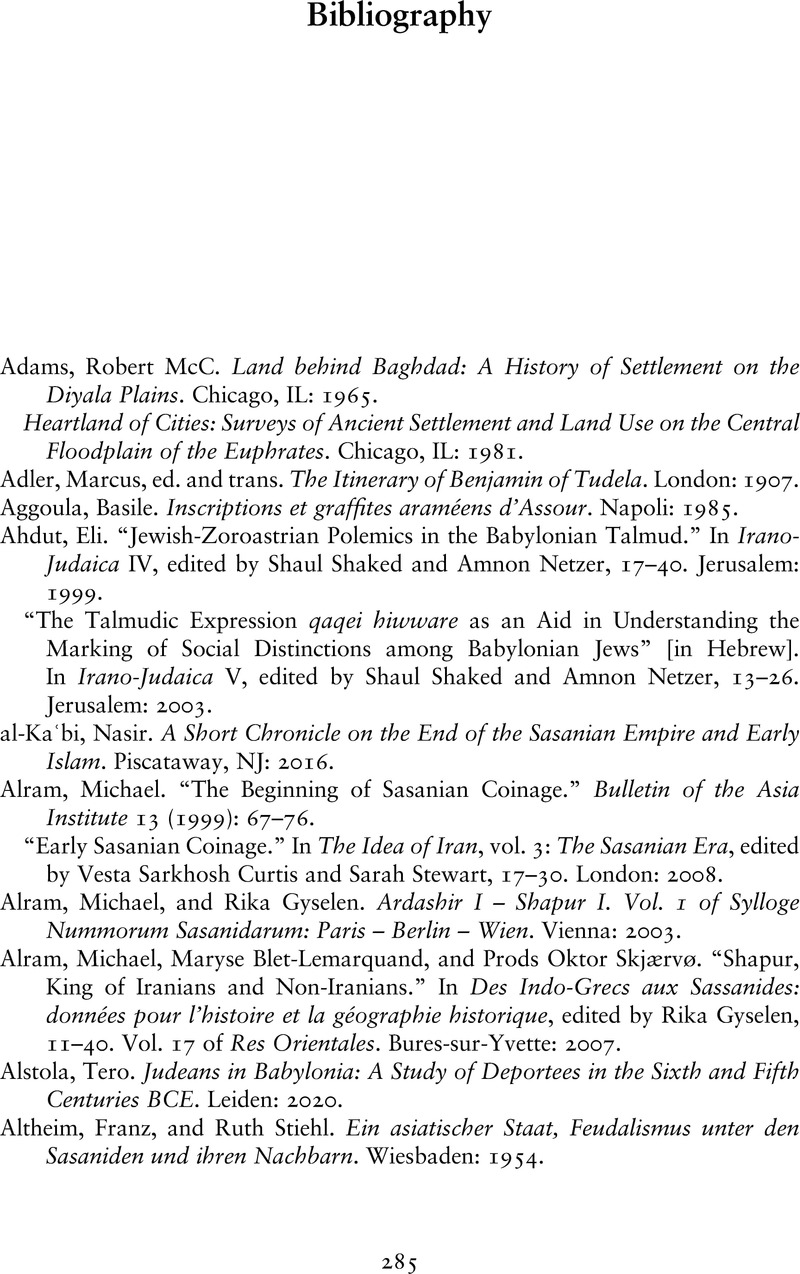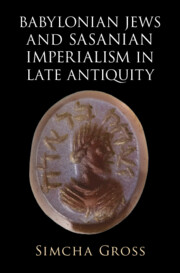Book contents
- Babylonian Jews and Sasanian Imperialism in Late Antiquity
- Babylonian Jews and Sasanian Imperialism in Late Antiquity
- Copyright page
- Contents
- Acknowledgments
- Introduction
- 1 Jewish Society under Sasanian Rule
- 2 Competing for Power
- 3 Beyond ‘Tolerance’
- 4 Forgetting Persecution
- 5 Rabbis and Fire Temples
- 6 Kings and Religion in the Talmud and in the Imagination of Sasanian Communities
- Conclusion
- Bibliography
- General Index
- Source Index
- References
Bibliography
Published online by Cambridge University Press: 04 April 2024
- Babylonian Jews and Sasanian Imperialism in Late Antiquity
- Babylonian Jews and Sasanian Imperialism in Late Antiquity
- Copyright page
- Contents
- Acknowledgments
- Introduction
- 1 Jewish Society under Sasanian Rule
- 2 Competing for Power
- 3 Beyond ‘Tolerance’
- 4 Forgetting Persecution
- 5 Rabbis and Fire Temples
- 6 Kings and Religion in the Talmud and in the Imagination of Sasanian Communities
- Conclusion
- Bibliography
- General Index
- Source Index
- References
Summary

- Type
- Chapter
- Information
- Babylonian Jews and Sasanian Imperialism in Late Antiquity , pp. 285 - 334Publisher: Cambridge University PressPrint publication year: 2024



